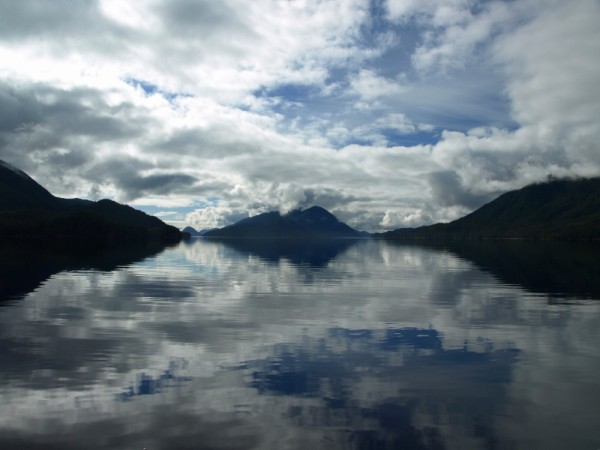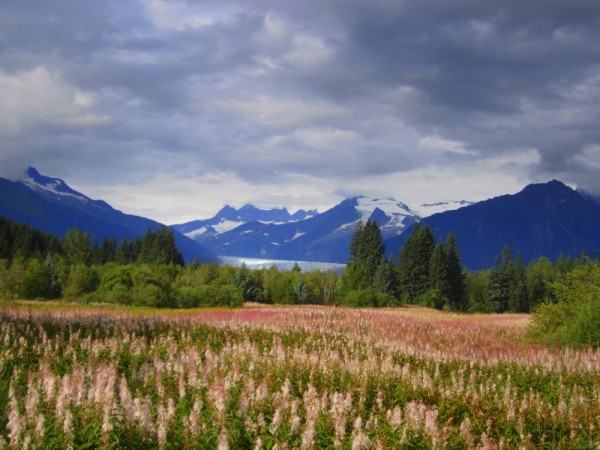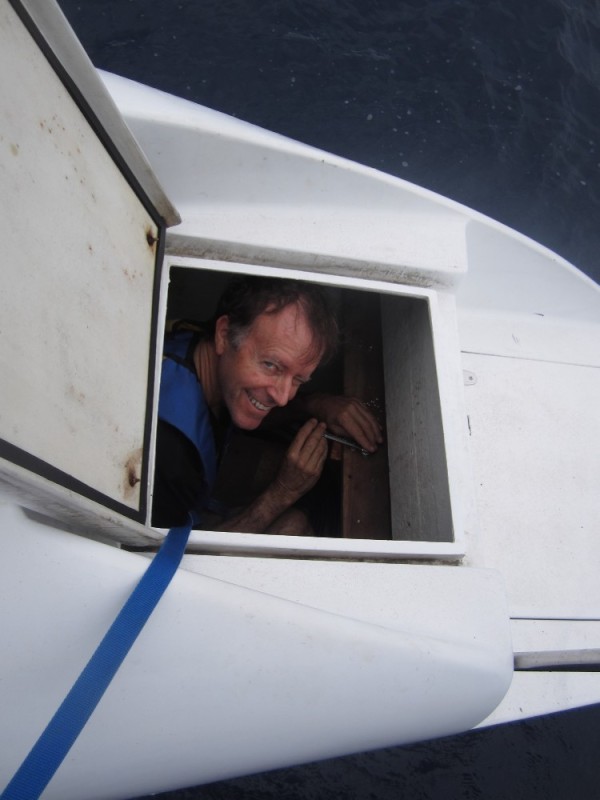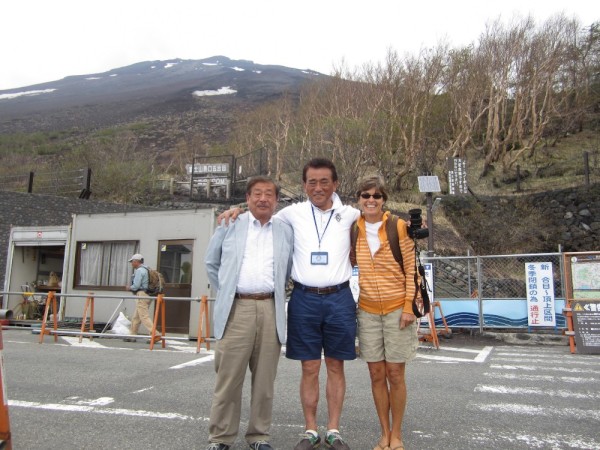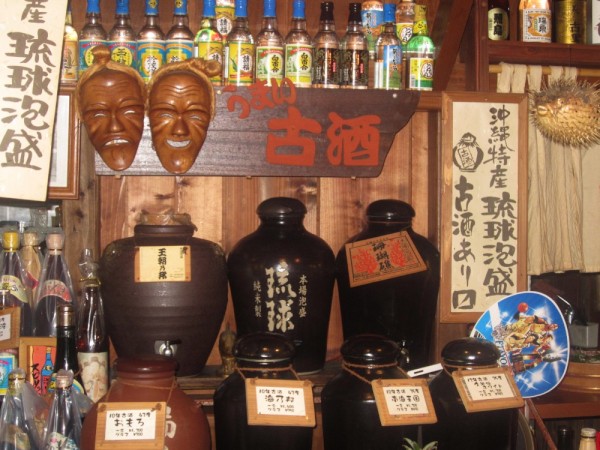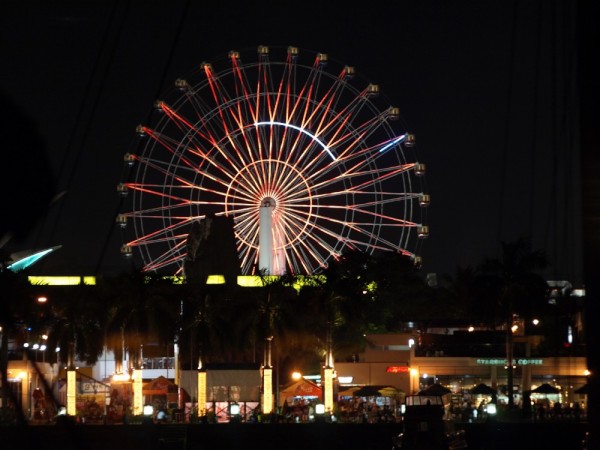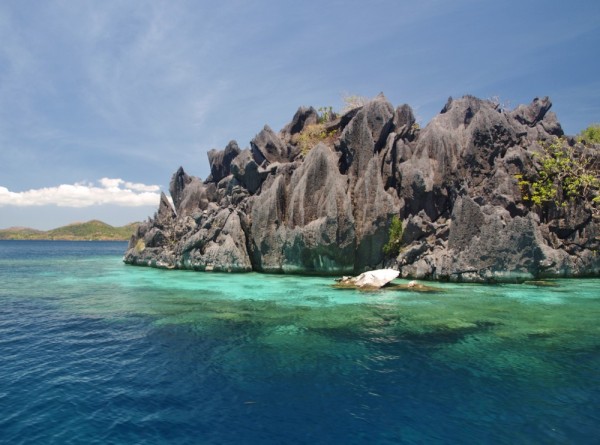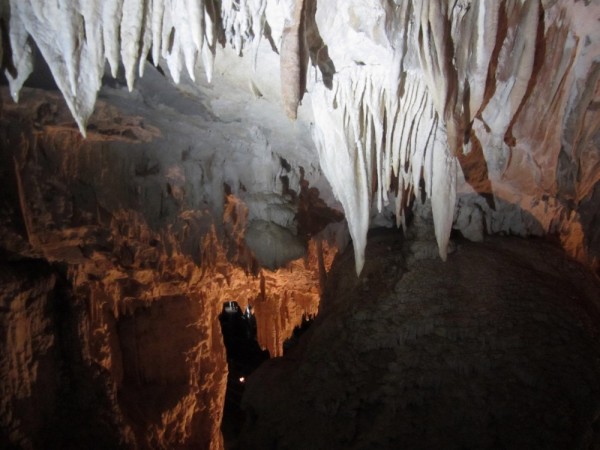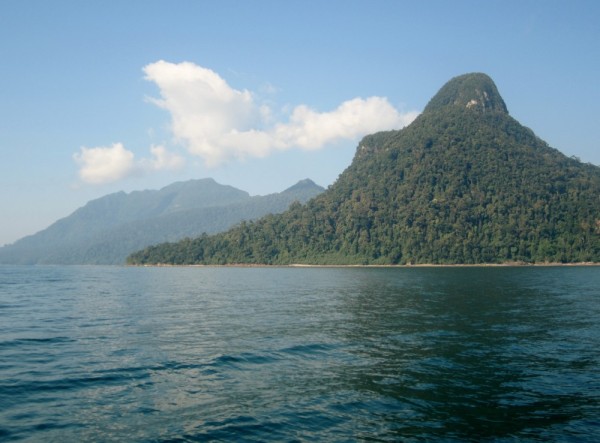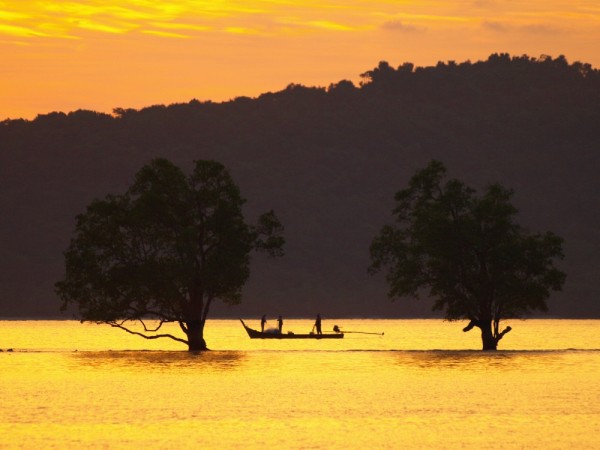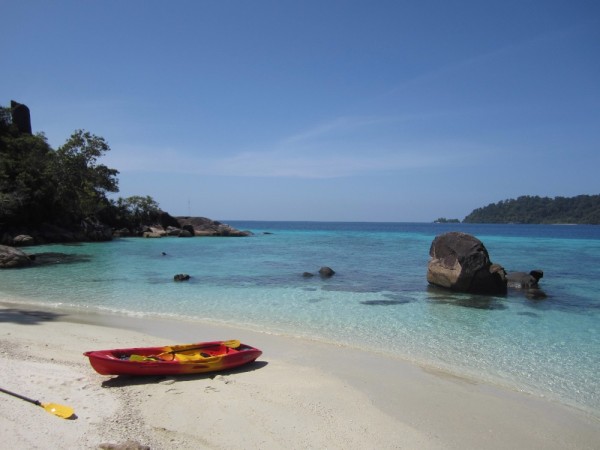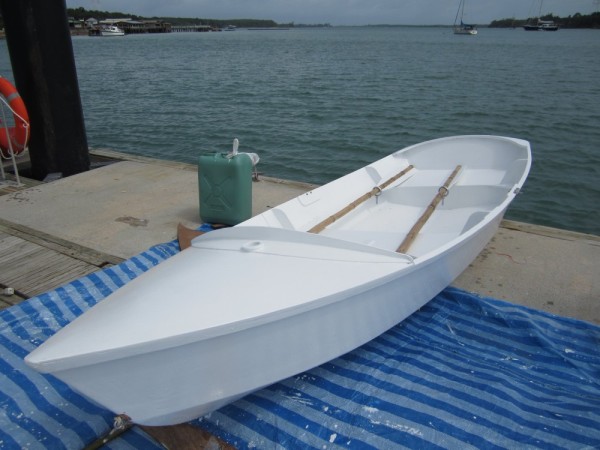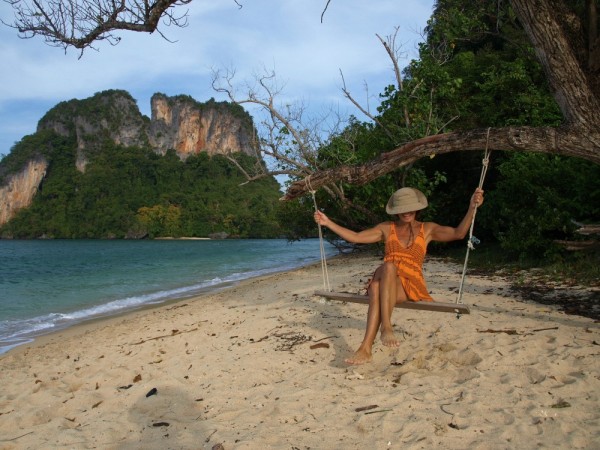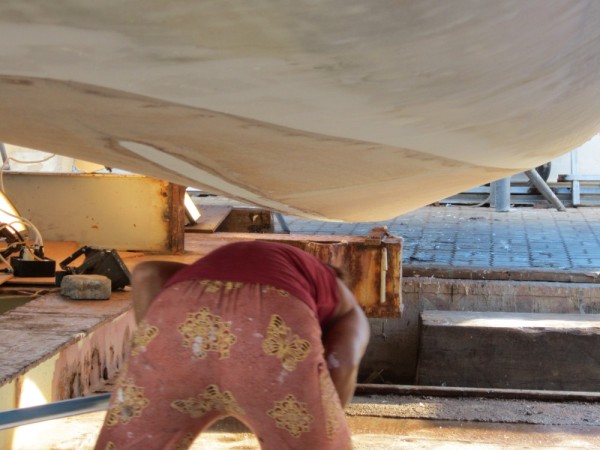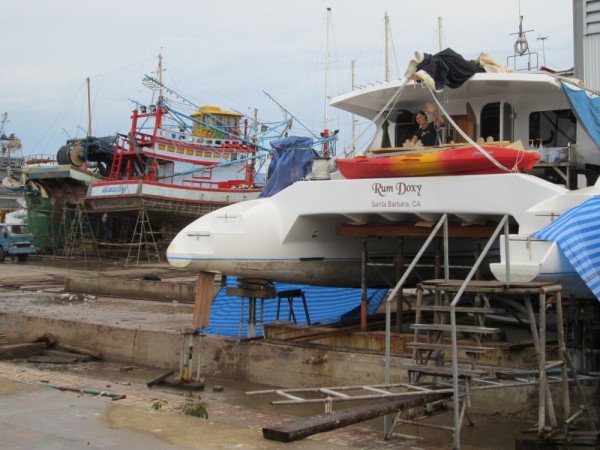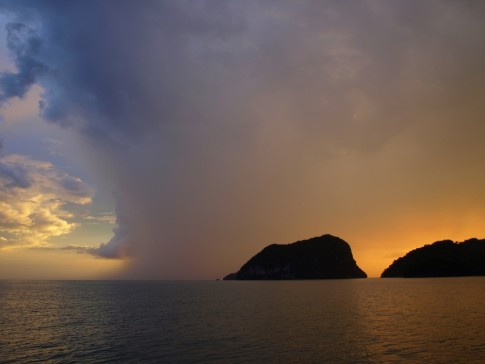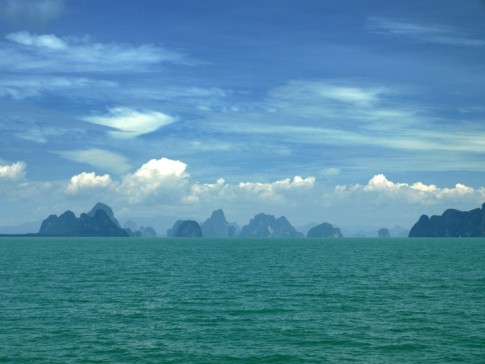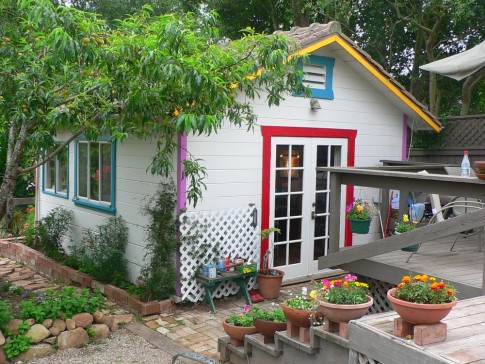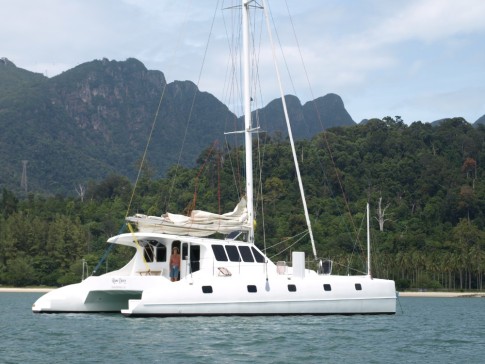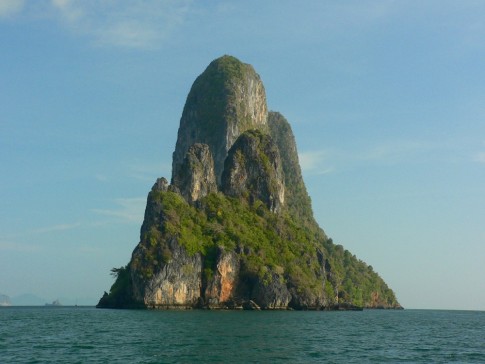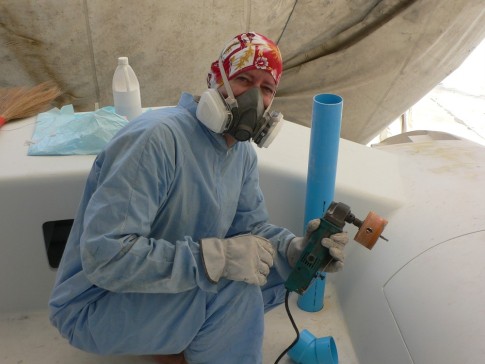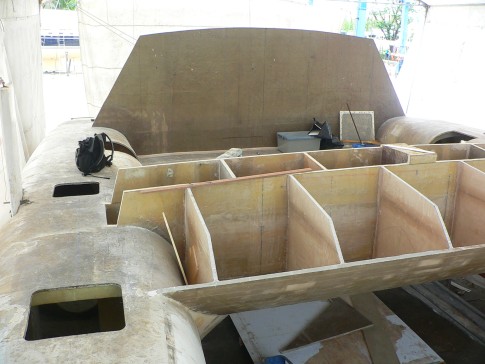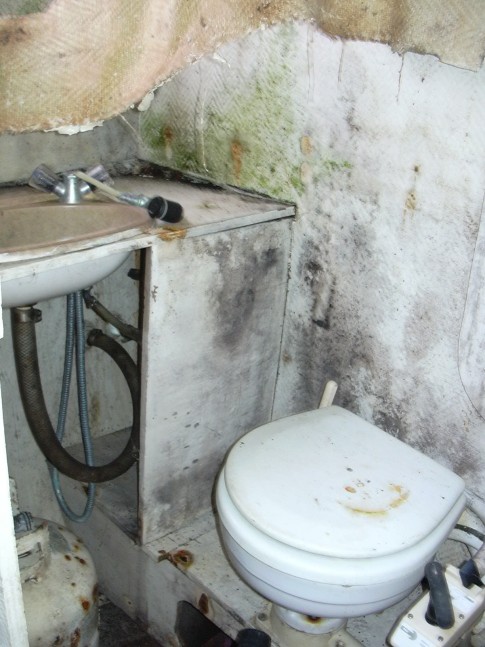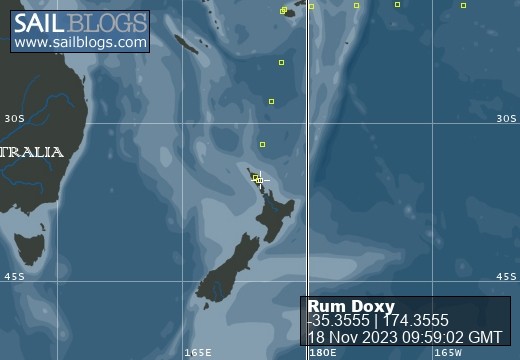
A Boat Too Far
In 2005 we bought a 46' catamaran in Thailand as a wreck. We removed the cabin, bridgedeck, main crossbeam and all the bulkheads then completely redisigned and rebuilt her in Phuket over the course of 5 years. It seemed like a good idea at the time..
23 November 2018
16 November 2018
12 November 2018
04 November 2018
03 November 2018
26 October 2018
30 March 2018 | Puerto Madera, Chiapas Mexico
21 March 2018
21 February 2018
21 February 2018 | La Cuz
21 January 2018
07 December 2017 | Santa Rosalia, BCS
26 April 2017
25 March 2017
24 March 2017
17 March 2017
23 February 2017 | Cabo San Lucas
23 February 2017 | Bahia Magdalena
06 February 2017 | San Diego
23 September 2016 | Ventura West Marina
South Island
13 December 2023
Mike
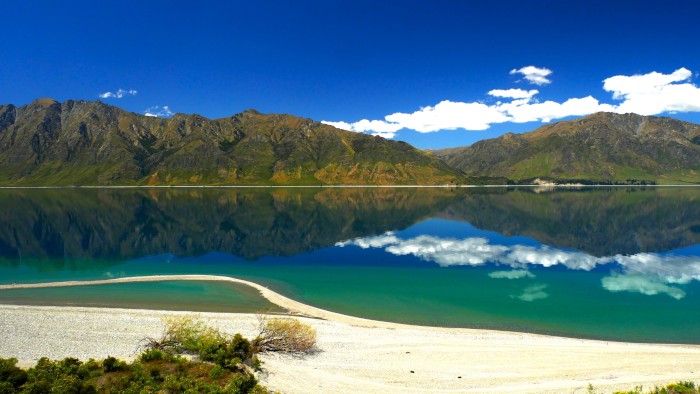
We had a bit of time before having to button up the boat and returning home to work so we decided to take a trip to the South Island, leaving the boat in Gulf Harbor marina near Auckland. We flew into Queenstown and rented a car for 10 days which we used to visit Milford Sound, the Southern Alps and the West Coast.
We spent the first few days at a "Holiday Camp" south of Te Anau. It was started by a couple of Californians in the early seventies and had a solid hippy vibe with lots of cool custom carpentry and old derelict hippy busses scattered around the property.
After the obligatory visit to Milford Sound and some spectacular hikes in the area we headed up to Wanaka where we discovered a mountain bike park. We rented bikes and set out, not knowing what to expect as we had never been to a bike park. Turns out it's like Disneyland for mountain bikers. The sculped trails, berms and jumps made it feel more like skiing than biking and we couldn't keep the goofy grins off our faces as we swooped down the mountain. As fun as the biking was the views were the best part of the ride. From the top we looked out over Lake Wanaka and Mt. Aspiring National Park, catching glimpses of the mountain at 10,000' when the clouds parted.
We then headed out to the West Coast to see the Fox and Franz Josef glaciers. It rained most of the time so we spent most of our time feeding the blackflies on rainforest hikes and visiting the Wildlife center where we got to see Kiwis and Tuataras. We did get a glimpse of the Fox glacier one evening just as the sun went down so were weren't totally skunked.
We passed through Wanaka on our way back and did another spin in the bike park before flying back to Auckland.
We spent the first few days at a "Holiday Camp" south of Te Anau. It was started by a couple of Californians in the early seventies and had a solid hippy vibe with lots of cool custom carpentry and old derelict hippy busses scattered around the property.
After the obligatory visit to Milford Sound and some spectacular hikes in the area we headed up to Wanaka where we discovered a mountain bike park. We rented bikes and set out, not knowing what to expect as we had never been to a bike park. Turns out it's like Disneyland for mountain bikers. The sculped trails, berms and jumps made it feel more like skiing than biking and we couldn't keep the goofy grins off our faces as we swooped down the mountain. As fun as the biking was the views were the best part of the ride. From the top we looked out over Lake Wanaka and Mt. Aspiring National Park, catching glimpses of the mountain at 10,000' when the clouds parted.
We then headed out to the West Coast to see the Fox and Franz Josef glaciers. It rained most of the time so we spent most of our time feeding the blackflies on rainforest hikes and visiting the Wildlife center where we got to see Kiwis and Tuataras. We did get a glimpse of the Fox glacier one evening just as the sun went down so were weren't totally skunked.
We passed through Wanaka on our way back and did another spin in the bike park before flying back to Auckland.
Making friends with the locals
17 November 2023
Annette/Mike
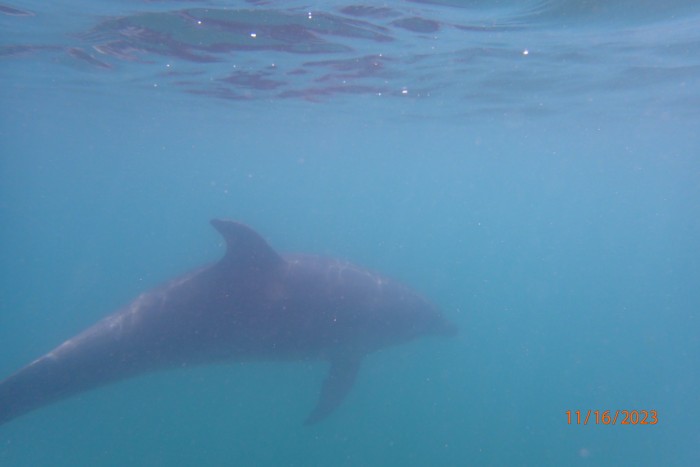
Since our arrival in New Zealand we've been exploring the numerous islands and coves along the Northland coast. We sailed as far north as Ranganau Bay, about 30 miles south of the Northern tip of the country, before returning to the Bay of Islands. We usually stay at each spot long enough to explore our surroundings, go ashore for a hike, kayak along the shore or just rest for a day, then off to the next spot.
So it was when we pulled into Wotuarohia (aka Robertson) Island. We hadn't been anchored long when we were startled by a "blow" right off the side of the boat. A large bottlenose dolphin! What a surprise since we had not seen many dolphins since leaving Chile. It's approach seemed with intention as it neared and circled next to the boat while we waved from the deck. It lingered around, checking us out then would take off into the distance returning a few minutes later to linger some more. We stood on the deck welcoming its return until finally it didn't come back. We enjoyed our nice little visit.
The next morning, while getting ready to move on to our next anchorage, our dolphin buddy came back for another visit, just like the previous day. When we thought it was done with us, we pulled anchor, set the jib and slowly sailed on toward Urupukapuka Island, 4 miles away. We soon realized that the dolphin had followed us out of the anchorage and was slowly drifting between the bows like an escort as we sailed. We were moving too slow for bow riding but It entertained itself by scratching it's back on the bottom of the bows, rolling over and scratching it's belly when the boat would slow between gusts. It would then move off in front of us with a tail slap before returning for more. Out of sight it springs out of the water and bellyflops on our starboard side, then disappears, and reappears on the portside and we realize that we were being treated to an exclusive and outstanding solo dolphin performance.
Our dolphin escorted and entertained us all the way into our anchorage. As we set the anchor he circled alongside and blew bubbles in what we could only assume was an invitation. Mike and I couldn't get into our wetsuits fast enough and as soon as we were in the water It swam directly over to us eager to play. Swimming from one to the other of us, our buddy would come spiraling around us, bobbing it's head and circling, just out of reach, while talking to us in excited whistles. Then it would dart off and return again from a different direction, playing "hide and seek" in the murky water. It was exhilarating, all three of us laughing and having a blast playing in the water. I don't know how long we were playing but dolphins have fish to catch and places to be and suddenly it was gone. We didn't get a chance to say "goodby" but nevertheless felt that we had been treated to something special on a day that we will never forget.
So it was when we pulled into Wotuarohia (aka Robertson) Island. We hadn't been anchored long when we were startled by a "blow" right off the side of the boat. A large bottlenose dolphin! What a surprise since we had not seen many dolphins since leaving Chile. It's approach seemed with intention as it neared and circled next to the boat while we waved from the deck. It lingered around, checking us out then would take off into the distance returning a few minutes later to linger some more. We stood on the deck welcoming its return until finally it didn't come back. We enjoyed our nice little visit.
The next morning, while getting ready to move on to our next anchorage, our dolphin buddy came back for another visit, just like the previous day. When we thought it was done with us, we pulled anchor, set the jib and slowly sailed on toward Urupukapuka Island, 4 miles away. We soon realized that the dolphin had followed us out of the anchorage and was slowly drifting between the bows like an escort as we sailed. We were moving too slow for bow riding but It entertained itself by scratching it's back on the bottom of the bows, rolling over and scratching it's belly when the boat would slow between gusts. It would then move off in front of us with a tail slap before returning for more. Out of sight it springs out of the water and bellyflops on our starboard side, then disappears, and reappears on the portside and we realize that we were being treated to an exclusive and outstanding solo dolphin performance.
Our dolphin escorted and entertained us all the way into our anchorage. As we set the anchor he circled alongside and blew bubbles in what we could only assume was an invitation. Mike and I couldn't get into our wetsuits fast enough and as soon as we were in the water It swam directly over to us eager to play. Swimming from one to the other of us, our buddy would come spiraling around us, bobbing it's head and circling, just out of reach, while talking to us in excited whistles. Then it would dart off and return again from a different direction, playing "hide and seek" in the murky water. It was exhilarating, all three of us laughing and having a blast playing in the water. I don't know how long we were playing but dolphins have fish to catch and places to be and suddenly it was gone. We didn't get a chance to say "goodby" but nevertheless felt that we had been treated to something special on a day that we will never forget.
Opua to Whangaroa Bay
07 November 2023
Annette
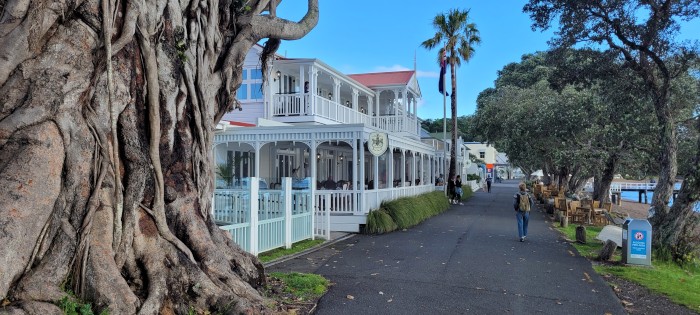
Luck was with us once again as we sailed into the last slip available in Opua Marina just as ExtraTropical Cyclone Lola hit the North Coast of New Zealand. But while the wind was howling and the rain was pouring we had a blast! We got to meet and hang out with several other cruising couples who had also just arrived from the various parts of the South Pacific. All of us were grateful to be in the marina, happy the passage was over and looking forward to exploring New Zealand. After 5 days of non-stop socializing and having fun, the storm passed and we all gave up our comfy slips and went our separate ways.
Our first night was spent anchored off the the Whangerei Treaty Grounds, where the treaty between Maori chiefs and the British was first signed, setting in motion the creation of the country of New Zealand. We are now in Whangaroa Bay after stops in the Cavalli Islands and the town of Russel in the Bay of Islands.
Before arriving in NZ we made tentative arrangements with a boatyard to haul out on November 15, but once we arrived and called to confirm we were informed the only day left to haul out was December 19, take it or leave it. We'll take it, now we have all kinds of time to Explore the Northland Coast of New Zealand.
Spring is in the air down here, birds are twittering, trees and flowers are blooming, the sun is warm, the rains are not freezing and the summer tourist season has not yet begun, lucky for us. The Northland region is where New Zealanders come to vacation in the summer, so we've been told. This area is a cruiser's paradise. One can sail along remote white sandy beaches, or gentle green pastures, cruise under rugged cliff outcroppings hidden deep up a channel flanked by rainforest ending in a quiet little anchorage, or sail from one quaint little township to another, all of which can be done in a few hours and at most in a daysail (no overnighters). We still have yet to see a piece of trash alonside the road or on a beach. When we need a break from sailing they've got hiking trails to the next town, up to the nearest peak, along the stream up to the waterfall and over to the beer pub, just to mention a few we've done. The hiking trail network here is amazing. We've also heard of some fantastic mountain bike parks in the Northland area as well as in the Auckland area that we will definitely check out, as I write this Mike is researching what mountain bikes we will buy while we are here to replace the ancient and slowly disintegrating bikes that we have been using for the past 15 years.
Our plan is to head up towards the North Cape, as weather permits, then back down, stopping at the places we missed, as weather permits, and for now, the hardest part of our day is deciding what to do and where to go next.
Our first night was spent anchored off the the Whangerei Treaty Grounds, where the treaty between Maori chiefs and the British was first signed, setting in motion the creation of the country of New Zealand. We are now in Whangaroa Bay after stops in the Cavalli Islands and the town of Russel in the Bay of Islands.
Before arriving in NZ we made tentative arrangements with a boatyard to haul out on November 15, but once we arrived and called to confirm we were informed the only day left to haul out was December 19, take it or leave it. We'll take it, now we have all kinds of time to Explore the Northland Coast of New Zealand.
Spring is in the air down here, birds are twittering, trees and flowers are blooming, the sun is warm, the rains are not freezing and the summer tourist season has not yet begun, lucky for us. The Northland region is where New Zealanders come to vacation in the summer, so we've been told. This area is a cruiser's paradise. One can sail along remote white sandy beaches, or gentle green pastures, cruise under rugged cliff outcroppings hidden deep up a channel flanked by rainforest ending in a quiet little anchorage, or sail from one quaint little township to another, all of which can be done in a few hours and at most in a daysail (no overnighters). We still have yet to see a piece of trash alonside the road or on a beach. When we need a break from sailing they've got hiking trails to the next town, up to the nearest peak, along the stream up to the waterfall and over to the beer pub, just to mention a few we've done. The hiking trail network here is amazing. We've also heard of some fantastic mountain bike parks in the Northland area as well as in the Auckland area that we will definitely check out, as I write this Mike is researching what mountain bikes we will buy while we are here to replace the ancient and slowly disintegrating bikes that we have been using for the past 15 years.
Our plan is to head up towards the North Cape, as weather permits, then back down, stopping at the places we missed, as weather permits, and for now, the hardest part of our day is deciding what to do and where to go next.
Arrival in New Zealand
28 October 2023 | Opua, New Zealand
Mike
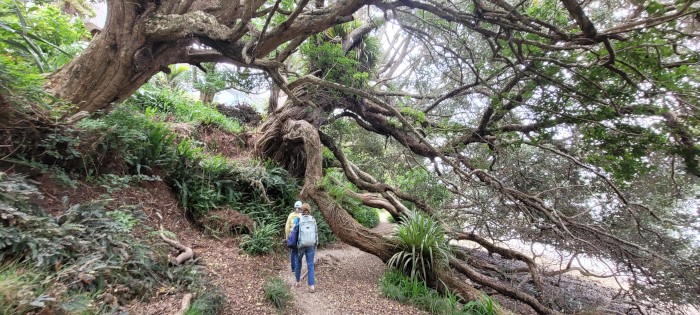
We got our first glimpse of New Zealand just before sunset on the 26th. Soon after, we heard another boat calling the powers that be to inform them that they were approaching Opua but that they had a fuel blockage and might need some assistance getting to the quarantine dock. We could see on AIS that we would be arriving just behind them so we called and offered to follow them in in case they needed fuel or a tow. As we entered the Bay of Islands the wind and seas calmed and we ghosted in under a nearly full moon with the smell of cut grass coming in on the breeze. As we neared the marina our companion boat, "Chantey", who were just returning to their home port after completing a 9 year circumnavigation, called and said that they could use some fuel after all. The breeze had just picked up a bit and, as they drifted slowly towards some moored boats, we gingerly came aside and Annette passed them a jerry jug of diesel. They were quickly underway and we both tied up at the Q dock around 1:00 am.
Check in was easy next morning. As Customs was searching the boat they noticed the brewery in the port hull and became more interested in talking about beer than finishing their inspection. We knew immediately that we would like this place.
We got a slip in the marina as the cyclone in Vanuatu was due to hit here in a couple of days. As soon as we stepped ashore we felt like Dorothy in the land of Oz. Even in this small town there is every kind of marine store imaginable with prices similar to back home. Chandleries, cafes, bakery, hot showers, laundry all at the end of the dock. What's not to like. One thing that struck us immediately is that, for the first time in years, we are able to understand much of what the locals say to us.
Biosecurity made off with pretty much all of our fresh provisions so we made a trip to the supermarket in nearby Paihia yesterday. Paihia is about a 2 mile drive, or a 4 mile walk along the beach so, having no car but a couple of feet apiece, we walked the beautiful trail with our other new friends from Freya. After stocking up at the store we had dinner at a brewpub recommended by Customs that did not disappoint, then took a cab back to the marina.
Today, the remains of the hurricane, now an extra-tropical cyclone, have arrived and we are hunkered down in the rain with the heater going. The wind outside the bay is predicted to be 50 knots, gusting to 65, so we reckon we will stay another day or so
Check in was easy next morning. As Customs was searching the boat they noticed the brewery in the port hull and became more interested in talking about beer than finishing their inspection. We knew immediately that we would like this place.
We got a slip in the marina as the cyclone in Vanuatu was due to hit here in a couple of days. As soon as we stepped ashore we felt like Dorothy in the land of Oz. Even in this small town there is every kind of marine store imaginable with prices similar to back home. Chandleries, cafes, bakery, hot showers, laundry all at the end of the dock. What's not to like. One thing that struck us immediately is that, for the first time in years, we are able to understand much of what the locals say to us.
Biosecurity made off with pretty much all of our fresh provisions so we made a trip to the supermarket in nearby Paihia yesterday. Paihia is about a 2 mile drive, or a 4 mile walk along the beach so, having no car but a couple of feet apiece, we walked the beautiful trail with our other new friends from Freya. After stocking up at the store we had dinner at a brewpub recommended by Customs that did not disappoint, then took a cab back to the marina.
Today, the remains of the hurricane, now an extra-tropical cyclone, have arrived and we are hunkered down in the rain with the heater going. The wind outside the bay is predicted to be 50 knots, gusting to 65, so we reckon we will stay another day or so
A little break
25 October 2023
Mike
We got a bit of a rest today as a high moved in over us and the seas flattened out as the wind veered to the north and died down. This is the first day we have not felt like we were sailing in a paint shaker and it feels good to not have our brains rattled around in our skulls. We have been motoring with both motors today, trying to beat the next low to New Zealand and it looks like we might make it, arriving in Opua early Friday morning just before the front hits. It turns out this was a good weather window in more than one way as tropical cyclone Lola, a catagory 5 hurricane with 120 knot winds has just formed over Vanuatu. It is headed to New Caledonia and then towards New Zealand, but we should be in Opua before it gets there. Just a reminder that it is high time we were out of the tropics for the season. The water is down to 64 degrees and we are wearing socks and sweaters at night. Feels good to be able to move without sweating.
Skinny Sailing
23 October 2023
Annette
Day 6, half way there, 600 miles to go.
So far I would agree with the woman who said this passage from Fiji to NZ was not her favorite. As I write this we are on our 4th night and so far it has been a lumpy, bumpy slow ride with confused seas and tempramental winds, but nothing horrible. Except for the one night on my watch, of course. On the second day we had steady winds enough to fill our spinnaker from sunrise to sunset. Shortly after Mike went down to sleep the clouds blew over, darkening the sky and messing up the wind. First a drizzle, then a steady rain and then the sky opened up and the rain came down in sheets. Becasue the wind was coming straight from behind, slight wind changes were causing the main to jibe. The first two times this occured I went out and trimmed the sails to maintain a steady speed. I became soaked to the bone as the water poured out of the mainsail stack pack like Niagra Falls dumpimg on my head, my foul weather gear worthless. After two sail changes the main and jib were still fl
ogging.
Frustrated and tired, I decided to furl up the jib, sheet in and center the main and turn on the motor. But I just got dried off and put on fresh warm cloths and that would required me to go back out in the torrential rain. Screw it, I took off all my clothes, put on my safety harness and did all the sail handling in the buff. Skinny Sailing. We motored into a headwind for the next 2 days. Day 6 we are sailing again with wind on the beam.
As we climb in latitude from 17 degrees to 26 we welcome the need to put on long sleeves and pants.
So far I would agree with the woman who said this passage from Fiji to NZ was not her favorite. As I write this we are on our 4th night and so far it has been a lumpy, bumpy slow ride with confused seas and tempramental winds, but nothing horrible. Except for the one night on my watch, of course. On the second day we had steady winds enough to fill our spinnaker from sunrise to sunset. Shortly after Mike went down to sleep the clouds blew over, darkening the sky and messing up the wind. First a drizzle, then a steady rain and then the sky opened up and the rain came down in sheets. Becasue the wind was coming straight from behind, slight wind changes were causing the main to jibe. The first two times this occured I went out and trimmed the sails to maintain a steady speed. I became soaked to the bone as the water poured out of the mainsail stack pack like Niagra Falls dumpimg on my head, my foul weather gear worthless. After two sail changes the main and jib were still fl
ogging.
Frustrated and tired, I decided to furl up the jib, sheet in and center the main and turn on the motor. But I just got dried off and put on fresh warm cloths and that would required me to go back out in the torrential rain. Screw it, I took off all my clothes, put on my safety harness and did all the sail handling in the buff. Skinny Sailing. We motored into a headwind for the next 2 days. Day 6 we are sailing again with wind on the beam.
As we climb in latitude from 17 degrees to 26 we welcome the need to put on long sleeves and pants.
| Vessel Name: | Rum Doxy |
| Vessel Make/Model: | 46' Custom Catamaran |
| Hailing Port: | Santa Barbara, California |
| Crew: | Mike Reed, Annette Reed |
| Extra: | A "rum doxy" is 18th century pirate-speak for a woman of remarkable character and ambiguous virtue |
Rum Doxy 's Photos - Main
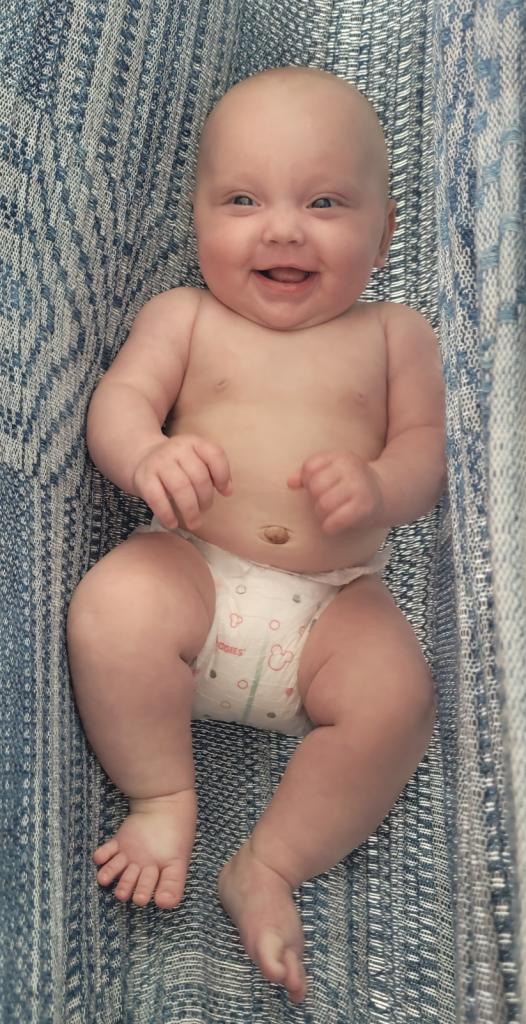 |
As new grandparents we think we can be forgiven for posting a gallery featuring our granddaughter.
15 Photos
Created 28 October 2023
|
|
After storing the boat for the Austral winter in Valdivia, we headed south in early October, arriving in Puerto Williams in early December.
83 Photos
Created 16 December 2019
|
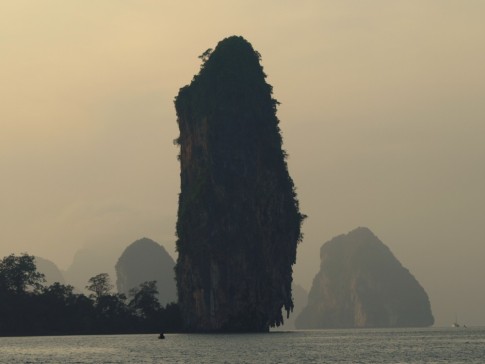 |
A quick root canal and we headed back to Phangnga bay to pick up where we left off.
50 Photos
Created 26 January 2011
|
Rum Doxy
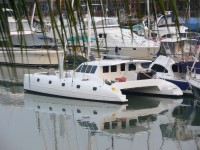
Who: Mike Reed, Annette Reed
Port: Santa Barbara, California
